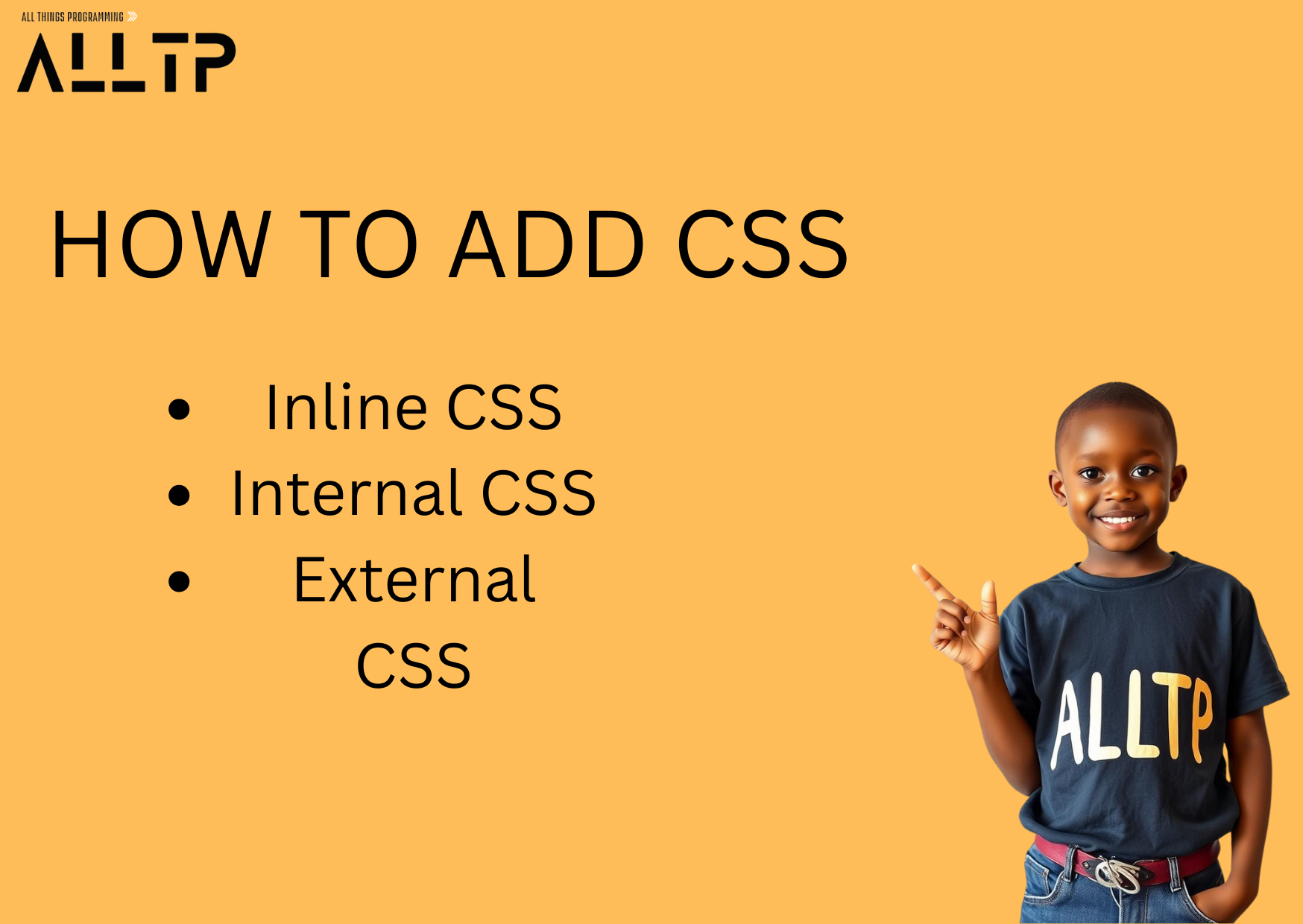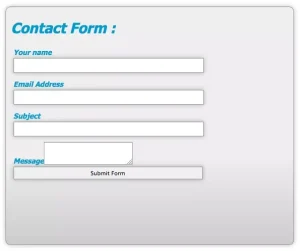If you’ve ever wondered how websites go from plain text to beautifully styled pages, the answer is CSS. CSS (Cascading Style Sheets) is a stylesheet language used to describe the look and formatting of a document written in HTML. In simple terms, it controls the colors, fonts, layouts, spacing, and overall design of a web page.
Learning how to add CSS is essential for anyone who wants to build or improve a website. It allows you to create visually appealing and user-friendly interfaces, helping your content stand out while improving the overall user experience.
In this article, we’ll walk you through the three main ways to add CSS to your HTML: inline, internal, and external. Whether you’re a beginner or just need a refresher, by the end of this guide, you’ll understand exactly how to add CSS to your web projects and when to use each method.
To get a personalised learning experience using our AI learning platform, enroll in one of our software developer classes. We will guide you from scratch and train you to get a high-paying job.
Why Learn How to Add CSS?
Learning to add CSS is a crucial step in becoming a confident web developer or designer. Here’s why it matters:
1. Enhances Website Design and User Experience
CSS allows you to transform a basic HTML page into a beautifully styled website. You can control fonts, colors, layout, and spacing all of which contribute to a more engaging and user-friendly experience.
2. Separates Content from Presentation
By using CSS, you keep your HTML focused on structure and content, while the CSS handles how everything looks. This makes your code cleaner, easier to manage, and more efficient to update later on.
3. Makes Websites Responsive and Professional-Looking
With CSS, you can create layouts that adapt to different screen sizes, making your website look great on phones, tablets, and desktops. It also helps give your site a polished, professional appearance that builds trust with visitors.
How to Add CSS to Your HTML
There are three main ways to apply CSS to your HTML pages: inline, internal, and external. Each method has its purpose depending on the size and complexity of your project.
a. Inline CSS
Inline CSS is applied directly to individual HTML elements using the style attribute, allowing you to apply CSS rules to a specific tag without affecting others.
You add the style attribute inside an HTML tag and write your CSS rules right there.
Example:
<p style="color: blue; font-size: 18px;">This is a blue paragraph.</p>Advantages:
- Quick and easy for small changes
- Useful for testing or overriding styles
Disadvantages:
- Not reusable
- Clutters HTML
- Harder to maintain in larger projects
b. Internal CSS
Internal is written inside a <style> tag within the <head> section of your HTML file.
Place your code in a <style> block at the top of your HTML document.
Example:
<!DOCTYPE html>
<html>
<head>
<style>
h1 {
color: green;
text-align: center;
}
p {
font-size: 16px;
}
</style>
</head>
<body>
<h1>Welcome!</h1>
<p>This is a paragraph styled with internal CSS.</p>
</body>
</html>Advantages:
- Keeps styles in one place for a single file
- Easier to read and update than inline styles
Disadvantages:
- Not reusable across multiple pages
- Can still become bulky with many styles
c. External CSS
External CSS stores your style rules in a separate .css file, which is then linked to your HTML document. This is the most common and scalable method.
How to Link an External CSS File:
Use the <link> tag inside the <head> of your HTML to link to your CSS file.
HTML Example:
<!DOCTYPE html>
<html>
<head>
<link rel="stylesheet" href="styles.css">
</head>
<body>
<h1>My Website</h1>
<p>This content is styled using an external stylesheet.</p>
</body>
</html>CSS File Example (styles.css):
h1 {
color: red;
font-family: Arial, sans-serif;
}
p {
font-size: 18px;
line-height: 1.5;
}Advantages:
- Keeps HTML and CSS separate and organized
- Reusable across multiple pages
- Ideal for larger projects
Disadvantages:
- Requires multiple files to be managed
- May slightly increase load time if not optimized
Using this method is considered best practice for most modern websites. If you’re looking for scalability and clean code, learning to add CSS using an external stylesheet is the way to go. Using this method is considered best practice for most modern websites. If you’re looking for scalability and clean code, learning to add CSS using an external stylesheet is the way to go. For best practices on using external stylesheets to maintain clean, maintainable HTML, see this CSS development guide.
Best Practices Based on Project Size
- Very Small Projects or Demos:
Inline or internal CSS is okay for testing or learning purposes. - One-Page Websites:
Internal CSS works well if you’re keeping everything in a single file. - Multi-Page Websites or Web Apps:
Use external CSS. It keeps your code cleaner, makes styles reusable, and helps your site load faster when cached.
Pro Tip: Even in small projects, getting into the habit of using external CSS helps you write cleaner, scalable code from the start.
Common Mistakes to Avoid When Adding CSS
Even though adding CSS is simple, there are some common pitfalls that beginners (and even experienced developers) run into. Avoiding these mistakes will save you time and frustration.
1. Overusing Inline Styles
Inline CSS might seem convenient at first, but using it too often can make your HTML messy and hard to maintain. It also prevents you from reusing styles across elements or pages, which defeats one of the main benefits of CSS.
Bad:
<p style="color: red; font-size: 14px;">Alert message!</p>Better: Use classes or external CSS for consistency and reusability.
2. Forgetting to Link External Stylesheets
One of the most common errors is forgetting to include the <link> tag or using the wrong path to the CSS file. If your styles aren’t showing up, this is the first thing to check.
Example:
<head>
<link rel="stylesheet" href="styles.css">
</head>Make sure your file name and path are correct, and that the CSS file is in the right folder.
3. Incorrect Syntax
CSS has its own rules, and small syntax mistakes can prevent styles from working entirely.
Common mistakes:
- Missing curly braces { }
- Forgetting colons: or semicolons ;
- Using incorrect selectors
Wrong:
p {
color red
font-size 16px
}Correct:
p {
color: red;
font-size: 16px;
}Avoiding these simple errors will help your CSS load correctly and make your code easier to manage.
Quick Tips for Writing Better CSS
Once you know to add CSS, the next step is writing it well. These quick tips will help you keep your styles organized, efficient, and easy to maintain.
1. Use Classes and IDs Properly
Classes (.) and IDs (#) are powerful tools in CSS. Use them wisely.
- Use classes when styling multiple elements with the same look.
- Use IDs sparingly, only for unique elements.
Example:
<p class="highlight">This paragraph is highlighted.</p>.highlight {
background-color: yellow;
}2. Organize Your Stylesheet
Group related styles together and keep a logical order in your CSS. For example, you can order your rules by:
- Page structure (header, main, footer)
- Components (buttons, forms)
- Utilities (spacing, colors)
This makes it easier to find and update code later.
3. Comment Your Code for Clarity
Comments don’t affect how your CSS works, but they’re incredibly helpful for explaining your code, especially in large projects or when working in teams.
Example:
/* Header section */
header {
background-color: #f0f0f0;
padding: 20px;
}Clear comments help you (and others) understand what each section of the stylesheet is doing.
By following these tips, your CSS will not only work well but also stay clean, manageable, and professional-looking no matter the size of your project.
To recap, there are three main ways to add CSS to your HTML: inline CSS applies styles directly to elements using the style attribute, internal CSS is written within a <style> tag in the <head> of your HTML file, and external CSS links a separate .css file using the <link> tag, the most efficient method for larger projects.
Each method has its purpose, and the best way to understand them is through hands-on experience. So don’t just read about it, try adding CSS to a simple HTML page today, experiment with colors, fonts, and layouts, and see your web pages come to life!




